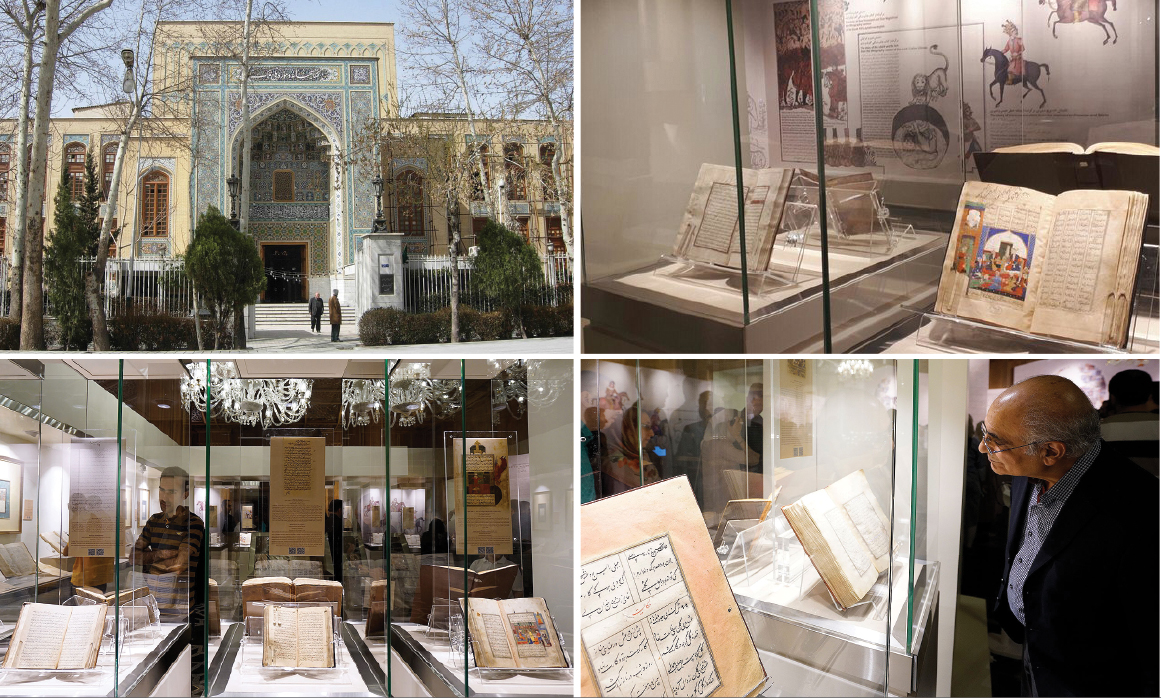Two new halls have recently been added to the Malek National Library and Museum in Tehran.
The first museum hall in the country on the subject of ‘storytelling in the history of Iran’ was inaugurated August 3, Mehr News Agency reported.
Titled ‘Thousand Tales’, the hall showcases a fabulous collection of ancient manuscripts in Iran, all about stories, tales and narratives, from centuries ago to contemporary times.
Benefitting from modern features including professional display cases, modern information technology, multimedia facilities and a spectacular atmosphere regarding design, the hall is eye-catching given the centuries old manuscripts in a given field.
In building the hall and its lighting, the museum has made use of the latest global standards along with technical skills of Iranian experts.
National events and religious beliefs of each nation appear in mythical, epic and folk tales or religious stories. National and religious narratives, in their most important function, preserve the concepts and cultural heritage of a land and people living there, and transfer them through the labyrinth of history to the future.
The treasured collection of manuscripts, at Malek Museum, belongs to Iranian-Islamic culture and civilization in the fields of stories, tales and narratives.
Among the valuable works are: ‘Hayy ibn Yaqzan’ (Alive, Son of Awake), the first Arabic novel, written by Ibn Tufail, an Arab philosopher and physician, in early 12th century; ‘Salaman and Absal’, an allegorical poem by the 15th-century Persian poet Jami, known for his achievements as a prolific scholar and writer of mystical literature; and ‘Khamsa’ or ‘Panj Ganj’ (Five Treasures), five long narrative poems by 12th-century Persian poet Nezami.
There also are ‘Amir Arsalan-e Namdar’, a popular Persian epic, told in the 19th century (though the Persian legend itself is much older), by a storyteller named Mohammad Ali Naqib al-Mamalek; and ‘Kalilah wa Dimnah’ or ‘The Panchatantra’ (Five Treatises), an ancient Indian collection of interrelated animal fables in Sanskrit verse and prose, translated into Arabic in 750 CE by Persian scholar Abdullah Ibn al-Muqaffa.
Major history books at the museum include: ‘Tarikh-e Bayhaqi’ (Bayhaqi’s History), a history book written by Abul-Fazl Bayhaqi, in Persian, in the 11th century. It is the most important source on the history of the Ghaznavid Empire (977-1186). It is also of literary value due to its unique style of narration; and ‘Tarikh-e Bal’ami (Bal’ami’s History), a translation of ‘History of the Prophets and Kings’ into Persian by Muhammad Bal’ami who started translating the book in 352 AH.
Malek National Library and Museum is affiliated to Astan Quds Razavi charity foundation, the administrative body that manages the shrine of Imam Reza (AS), the eighth Shia Imam, in Mashhad and all the institutions that belong to the organization.
It contains around 19,000 manuscripts, 70,000 books as well as other historical items such as 3,000 coins, stamps, carpets and paintings.
Manuscripts, calligraphies, coins and medals, stamps, paintings, miniatures, lacquer art, carpets, glasswork, woodwork, pottery, documents and decrees, photos, maps, journals and publications are in the museum’s treasury.
The museum is located Melal-e-Mottahed Bagh Melli St., Imam Khomeini St in south Tehran .


